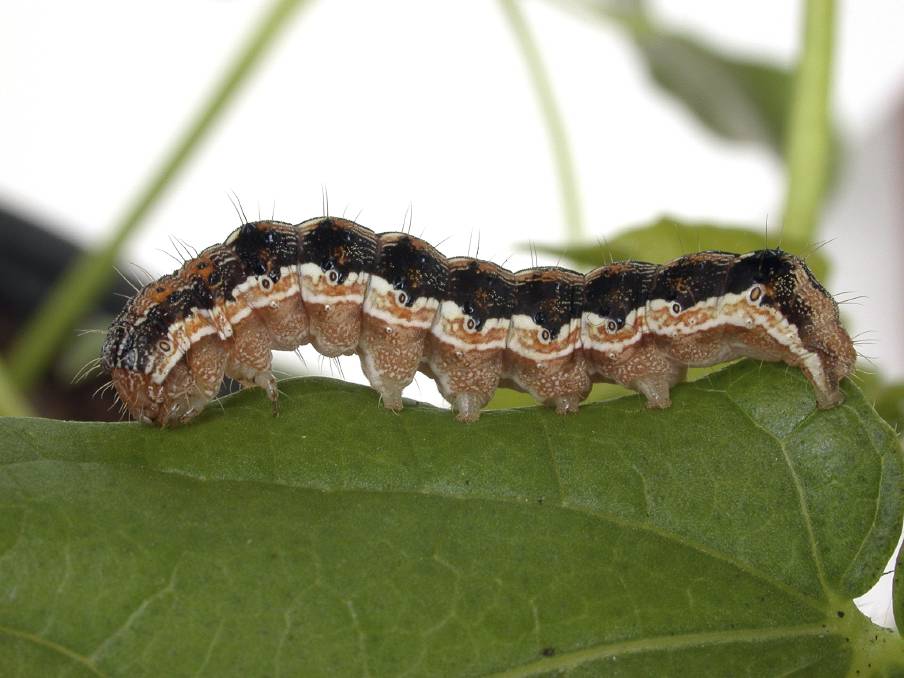QUEENSLAND scientists have busted a myth about a pest that affects grain crops on Australia’s east coast.
Department of Agriculture and Fisheries (DAF) grains entomologist Trevor Volp said conventional wisdom among grain growers in southern Queensland and northern New South Wales was that the cotton bollworm (Helicoverpa armigera) often wouldn’t infest grain crops until spring.
“However, our data challenges that assumption,” he said.
“Grain growers and agronomists can expect this major pest in their crop from early to mid-August and that means they should plan management strategies accordingly.”
Mr Volp oversees a network of agronomists and departmental staff who run a pheromone trapping program each year to detect flights of the cotton bollworm (H. armigera) and the native budworm (H. punctigera) in important cropping areas, to provide growers and agronomists with a warning system for potential egg-lay in susceptible crops.
 “This is the fifth year of our program, and a major result we’ve obtained is that traps are consistently capturing bollworm moths during winter, when a lot of people are only expecting native budworm to be present,” Mr Volp said.
“This is the fifth year of our program, and a major result we’ve obtained is that traps are consistently capturing bollworm moths during winter, when a lot of people are only expecting native budworm to be present,” Mr Volp said.
“The cosmopolitan bollworm has evolved resistance to a wide range of insecticides that native budworm is still susceptible to.
“If people are operating under the assumption that it is only budworm in the crop, but there turns out to be bollworm too, then they will potentially experience spray failures and be wasting their time and money.
“This information is of particular importance to growers and agronomists who are making control decisions for winter/spring crops in coming seasons. You should be prepared that bollworm will more than likely be present in your crop.”
While increasing autumn and winter temperatures are suspected to contribute to the presence of cotton bollworm, more research is needed to determine the source of these moths.
“Migration of bollworm from northern source areas may play an important role in these cropping regions too,” Mr Volp said.
“In central Queensland and coastal areas, larvae typically don’t go into pupal diapause (a period of suspended development over winter), and we usually assume that bollworm is present year-round.
“However, with the trend of warming autumn and winter temperatures, it is likely a large proportion of bollworm larvae in southern regions are also not entering into pupal diapause and are instead overwintering as slowly-developing larvae.”
The trapping network is funded by the Grains Research and Development Corporation (GRDC).
Source: QDAF
See to discriminate between H. armigera and H. punctigera at DAF’s Beatsheet: https://thebeatsheet.com.au/key-pests/helicoverpa-identification-and-behaviour/
Grain Central: Get our free daily cropping news straight to your inbox – Click here

HAVE YOUR SAY